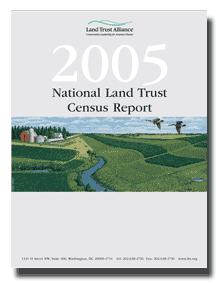Private land conservation booms in the United States
Private land conservation booms in the United States
mongabay.com
November 30, 2006
Private land conservation by local and state land trusts in the United States more than tripled between successive five-year periods from 2000 to 2005 according to a new report from the Land Trust Alliance, a group which represents 1,263 of the country’s 1,667 local, state and national land trusts.
The report says that 37 million acres—an area 16 1/2 times the size of Yellowstone National Park—have been conserved nationally by private means. State and local land trusts have doubled their conservation area from 6 million to 11.9 million acres in the past five years.
“The success of private land conservation boils down to this: When people appreciate the natural qualities of their environment, they are increasingly taking steps in each of their communities to conserve what makes that land unique,” said Rand Wentworth, President of the Land Trust Alliance. “With the federal government reporting that we lose about two million acres to development sprawl each year, private, voluntary conservation gives everyday Americans the tools and resources they need to protect their natural heritage. Private conservation works because it’s locally driven, supported by sound tax policy, and people-oriented. This is what land conservation looks like in the 21st century”

|
The survey found that the states with the highest amount of privately conserved land are found mostly in western (43.1 percent of total American land protected by state and local trusts) and northeast states (29.9 percent) : California, Maine, Colorado, Montana, Virginia, New York, Vermont, New Mexico, Pennsylvania and Massachusetts. The Land Trust Alliance notes that private conservation efforts in Colorado and Virginia have been boosted by a state tax incentive for conservation, in addition to a federal incentive. The Midwest (4.3 percent) and south (7.9 percent) lag far behind the other regions of the U.S.
The survey also found that acreage conserved by local and state land trusts’ conservation easements grew 148 percent from 2,514,566 acres in 2000 to 6,245,969 acres in 2005. Protecting natural areas and wildlife habitat (39 percent) was cited as the primary focus of land trust conservation efforts, followed by open space (38 percent) and water resources (26 percent).
The Land Trust Alliance says that new federal tax incentives for donations of conservation easements could spur further private conservation.
This is based on a news release from the Land Trust Alliance














